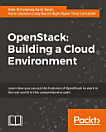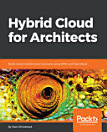OpenStack Trove Essentials
About this ebook
If you are a DBA / system administrator / architect, or a student who wants to build a Database as a Service based on OpenStack, this book is for you. You should have a basic knowledge of OpenStack components, RDBMS/NoSQL, IaaS, and cloud computing.
What You Will LearnGet to grips with the basics of OpenStack and the prerequisites to install TroveUnderstand the expectations of DBaaS and how Trove can help you achieve themSet up a basic installation of DevStack (Development Stack) in a virtual boxInstall Trove and utilize its configuration groups to manage and tune databasesUse Image builder to create guest images for TroveUtilize Trove to provision your first database instanceBack up and restore your databases with the help of TroveIn DetailOpenStack has become an extremely popular solution to build public and private clouds with. Database as a Service (DBaaS) enables the delivery of more agile database services at lower costs. Some other benefits of DBaaS are secure database deployments and compliance to standards and best practices. Trove is a DBaaS built on OpenStack and is becoming more popular by the day.
Since Trove is one of the most recent projects of OpenStack, DBAs and system administrators can find it difficult to set up and run a DBaaS using OpenStack Trove. This book helps DBAs make that step. We start by introducing you to the concepts of DBaaS and how is it implemented using OpenStack Trove. Following this, we look at implementing OpenStack and deploying Trove. Moving on, you will learn to create guest images to be used with Trove. We then look at how to provision databases in self-service mode, and how to perform administration tasks such as backup and recovery, and fine-tuning databases. At the end of the book, we will examine some advanced features of Trove such as replication.
Style and approachThis fast-paced, step-by-step guide introduces you to DBaaS, OpenStack Trove, and its components, leading you through building your own Cloud-based DBaaS. Using the DevStack deployment method, you will spend less time on installing OpenStack so you can devote more time to learning how to provision and manage databases in a DBaaS environment.
About the author
Alok Shrivastwa is a technologist from India, currently working as the director of cloud services for Microland Ltd. in their Center of Innovation. He has a keen interest in all things physical and metaphysical and is an innovator at heart. He has worked with multiple large- and medium-sized enterprises, designing and implementing their network security solutions, automation solutions, databases, VoIP environments, datacenter designs, public and private clouds, and integrations. He has also created several tools and intellectual properties in the field of operationalization of emerging technologies. He has authored a book, Learning OpenStack, with Packt Publishing, and has authored several whitepapers and blogs on technology and metaphysical topics, in addition to writing poems in Hindi. Also, he has been a guest speaker for undergraduate engineering students in Chennai. You can connect with him at https://in.linkedin.com/in/alokas or follow him on Twitter at @alok_as.
Sunil Sarat is the vice president of cloud and mobility services at Microland Ltd., an India-based global hybrid IT infrastructure services provider. He played a key role in setting up and running the emerging technologies practice, dealing with areas such as public/private cloud (AWS and Azure, VMware vCloud Suite, Microsoft, and OpenStack), hybrid IT (VMware vRealize automation/ orchestration, Chef, and Puppet), enterprise mobility (Citrix Xenmobile and VMware Airwatch), VDI /app virtualization (VMware Horizon Suite, Citrix XenDesktop/ XenApp, Microsoft RDS, and AppV), and associated transformation services. He is a technologist and a business leader with expertise in creating new practices and service portfolios, building and managing high-performance teams, strategy definition, technological roadmaps, and 24/7 global remote infrastructure operations. He has varied experience in handling diverse functions such as innovation/technology, service delivery, transition, presales/solutions, and automation. He has authored whitepapers, blogs, and articles on various technologies and service-related areas, is a speaker at cloud-related events, and reviews technical books. He has authored Learning OpenStack and reviewed Learning AirWatch and Mastering VMware Horizon 6, all by Packt Publishing. He holds various industry certifications in the areas of compute, storage, and security and holds an MBA in marketing. Besides technology and business, he is passionate about filmmaking and is a part-time filmmaker as well. For more information, you can visit his LinkedIn profile at https://www.linkedin.com/in/sunilsarat or follow him on Twitter at @sunilsarat.




